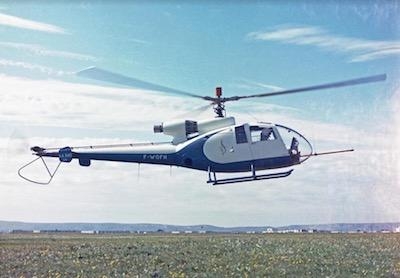Thu, Apr 27, 2017
First Flight Occurred April 7, 1967
Airbus Helicopters celebrated the 50th anniversary of the Gazelle’s maiden flight during a conference at the museum of aviation in St Victoret, near the company headquarters.

Fifty years after its maiden flight on April 7, 1967, the Gazelle is still being operated by nearly 100 customers in 34 countries and it is appreciated for its ease of maintenance and high reliability.
Developed and manufactured in cooperation with the United Kingdom at the end of the 1960s, more than 1,250 Gazelles have been delivered. Today 470 rotorcraft – more than a third of all Gazelles manufactured – are still in service, a hundred of which are operated by the French army.
A helicopter of many “firsts”, the Gazelle was the first Airbus helicopter to be equipped with the Fenestron which is still present on Airbus’ light and medium rotorcraft, including the first of the H generation, the H160. This major innovation improves safety around the tail rotor on the ground and reduces the sound level of the rotorcraft. It was also the first Airbus helicopter to be equipped with glass-resin blades developed in cooperation with the German company Bölkow. Lastly, it was the first helicopter in the world to be awarded the IFR qualification, category I, by the FAA, allowing operators to fly to instrument flight rules with a single pilot on board.
On 15 May 1971, the Gazelle broke three speed records in its category:
- Over 3 km (approx. 1.86 miles): 310 km/h (approx. 167 knots)
- 15/25 km (approx. 9.3 miles/15.5 miles): 312 km/h (approx. 168 knots)
- Over 100 km (approx. 62 miles) in a closed circuit: 296 km/h (approx. 160 knots)
The Gazelle was a major success in the military sector and nearly 80% of the rotorcraft in service are used by armies around the world. By the end of December 2016, the Gazelle fleet had accumulated more than 7 million flight hours. The Gazelles (SA341 and SA342) that have accumulated the most flight hours (14,200 and 13,100 respectively) are currently operating in the United States.
(Image provided with Airbus Helicopters news release)
More News
Pilot Applied Full Aft Stick And Nose-Up Trim, But The Airplane Remained On The Runway Analysis: The pilot reported that a preflight inspection and flight control checks revealed n>[...]
A Few Questions AND Answers To Help You Get MORE Out of ANN! 1) I forgot my password. How do I find it? 1) Easy... click here and give us your e-mail address--we'll send it to you >[...]
From 2022 (YouTube Edition): Before They’re All Gone... Humankind has been messing about in airplanes for almost 120-years. In that time, thousands of aircraft representing i>[...]
Advanced Air Mobility (AAM) A transportation system that transports people and property by air between two points in the NAS using aircraft with advanced technologies, including el>[...]
Aero Linx: MQ-1B Predator The MQ-1B Predator is an armed, multi-mission, medium-altitude, long-endurance remotely piloted aircraft that is employed primarily as an intelligence-col>[...]
 NTSB Final Report: Douglas A-4K
NTSB Final Report: Douglas A-4K ANN FAQ: Q&A 101
ANN FAQ: Q&A 101 Classic Aero-TV: PBY Catalina--From Wartime to Double Sunrise to the Long Sunset
Classic Aero-TV: PBY Catalina--From Wartime to Double Sunrise to the Long Sunset ANN's Daily Aero-Term (07.01.25): Advanced Air Mobility (AAM)
ANN's Daily Aero-Term (07.01.25): Advanced Air Mobility (AAM) ANN's Daily Aero-Linx (07.01.25)
ANN's Daily Aero-Linx (07.01.25)



